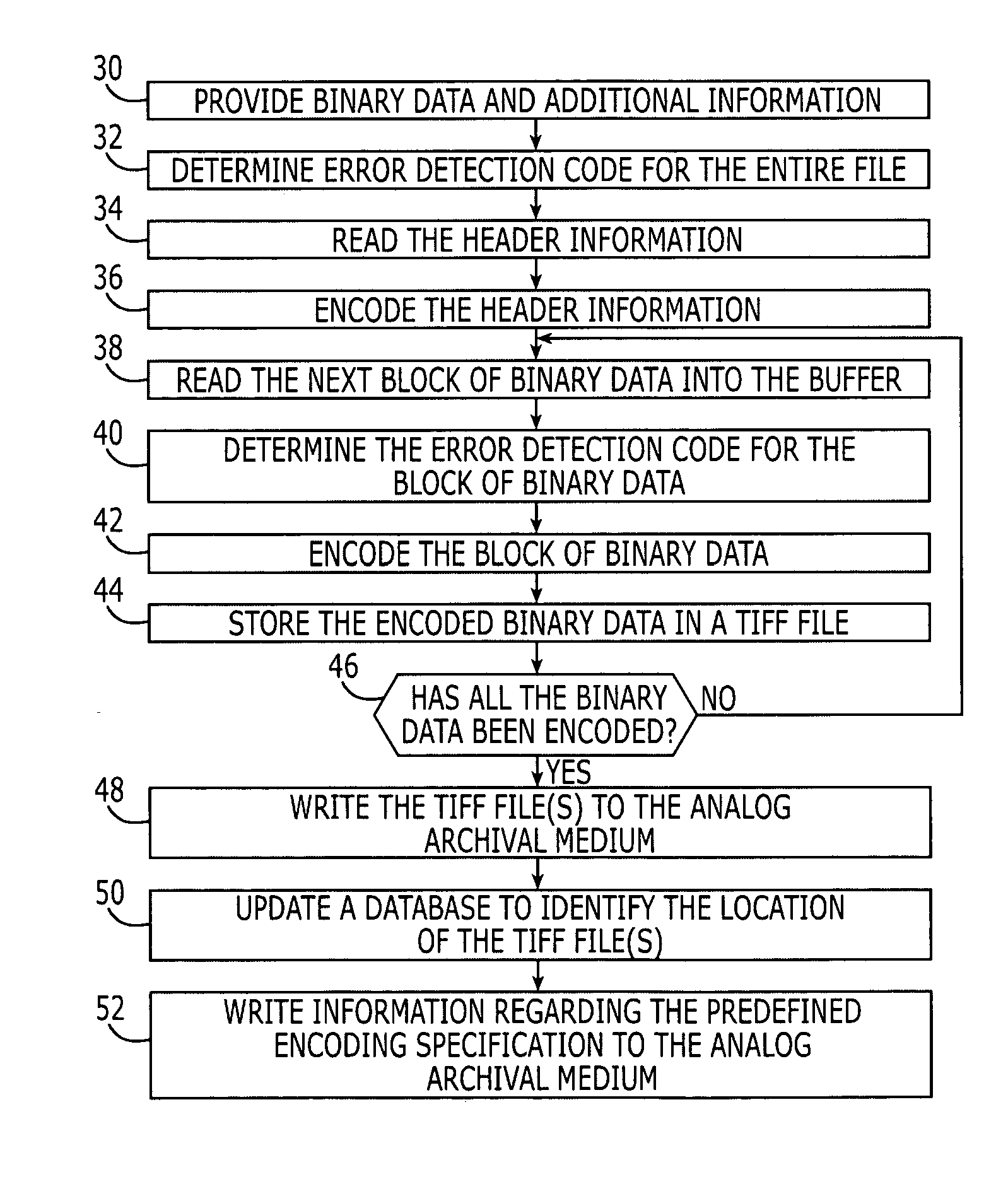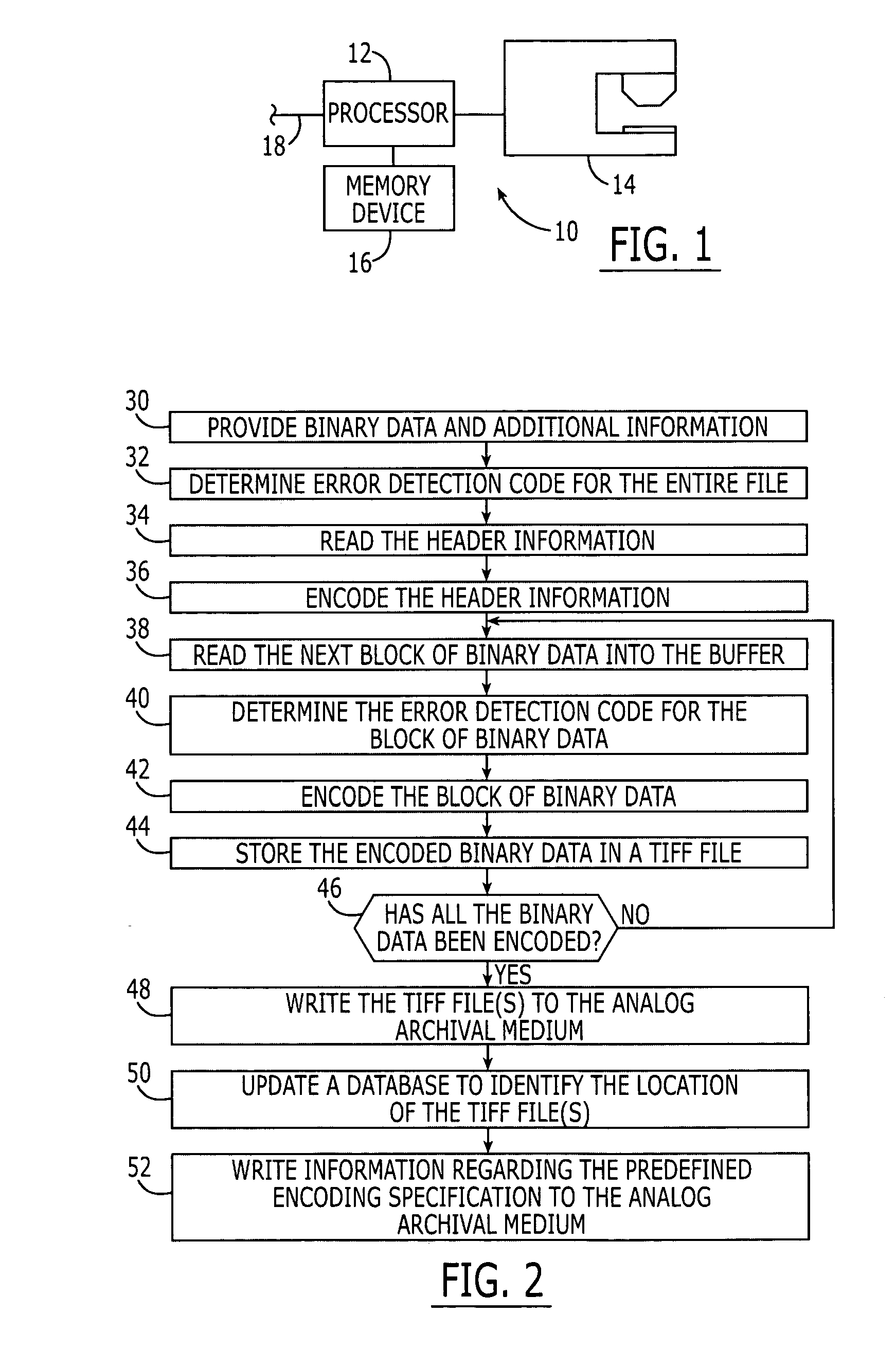Method and apparatus for preserving binary data
a technology of binary data and archival medium, applied in the field of methods and can solve the problems of inability to and inability to achieve archival medium for binary data for a long time, so as to reduce or eliminate the costs of migration and the associated possibility, and preserve the integrity of binary data
- Summary
- Abstract
- Description
- Claims
- Application Information
AI Technical Summary
Benefits of technology
Problems solved by technology
Method used
Image
Examples
Embodiment Construction
[0025] The present inventions now will be described more fully hereinafter with reference to the accompanying drawings, in which some, but not all embodiments of the invention are shown. Indeed, these inventions may be embodied in many different forms and should not be construed as limited to the embodiments set forth herein; rather, these embodiments are provided so that this disclosure will satisfy applicable legal requirements. Like numbers refer to like elements throughout.
[0026] According to the present invention, methods and apparatus for preserving binary data on an analog archival medium and thereafter recovering binary data from the analog archival medium are provided. As used herein, an analog archival medium is a medium for storing an analog representation of data expressed in various forms for a substantial period of time. For example, an analog archival medium may be capable of storing data for hundreds of years, such as for 500 years, and is therefore an attractive da...
PUM
 Login to View More
Login to View More Abstract
Description
Claims
Application Information
 Login to View More
Login to View More - R&D
- Intellectual Property
- Life Sciences
- Materials
- Tech Scout
- Unparalleled Data Quality
- Higher Quality Content
- 60% Fewer Hallucinations
Browse by: Latest US Patents, China's latest patents, Technical Efficacy Thesaurus, Application Domain, Technology Topic, Popular Technical Reports.
© 2025 PatSnap. All rights reserved.Legal|Privacy policy|Modern Slavery Act Transparency Statement|Sitemap|About US| Contact US: help@patsnap.com



